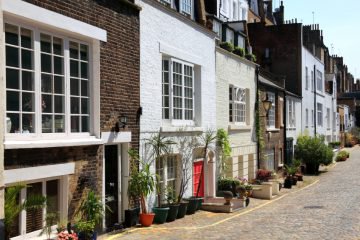Kensington and Chelsea to Move Families in Temporary Accommodation
The most expensive place to live in the UK, the Royal Borough of Kensington and Chelsea, is set to move some of its most vulnerable residents out of London due to the spiralling property market.
The Conservative constituency, where the average home costs £1.4m, will spend £10m on properties outside the borough for those that have become homeless. It is looking for 39 homes in outer London, around the M25 and in the Home Counties.
The properties will become temporary accommodation for people who often suffer physical or mental health problems and who do not have somewhere to live.
The plan has been criticised by housing activists, who believe the use of temporary accommodation to house vulnerable tenants will isolate them from vital community support.
The council leader, Nick Paget-Brown, says: “In an ideal world, we would like to buy properties in Kensington and Chelsea, but the numbers simply don’t stack up. We could only buy a handful of homes here. By looking further afield, we can purchase significantly more, making a huge difference to those on our waiting list.”1
Nearby Westminster City Council has spent £3.6m purchasing 25 homes in Thurrock, Essex, for temporary housing. The amount of Westminster-owned properties located outside London is now around 100.
The most recent group bought by the council are in Grays, 25 miles east of central London. They cost an average of £183,000 each, compared to the average house price of around £1m in Westminster.
This strategy arrives after plans were announced to demolish flats in Chelsea, which the council currently uses for temporary accommodation. It is thought that they will be replaced by private apartments costing up to £4m each. Comedian Eddie Izzard and the deputy Labour leadership candidate, Tom Watson, have opposed the scheme.
A council spokesperson states: “We do not rule out having to go further afield and will consider the M25 area and southern counties.”1
A single mother of two, Doaa Borie, 38, has one child who has special educational needs. She says: “It is unfair and it makes me angry.”
Her family is facing eviction from temporary housing on the Sutton Estate, a social housing area in Chelsea, which will be partly replaced by multi-million pound luxury apartments.
“It seems like only rich people can lead normal lives,” she continues. “Sending people out of London is a very bad idea. This will damage children by pushing us away from the community.”1
The Labour leader of Thurrock Council, John Kent, claims he was not told about Westminster’s plans and demands that the authority pays the social care costs of residents it moves out of the area.
In a letter sent in March to Westminster’s Conservative council leader, Philippa Roe, Kent writes: “Your current approach simply props up your failing housing system.
“It increases the burden on the public purse through ever-growing housing benefit payments by pushing up rents and demand for housing outside London.”1
The former leader of the Labour group at Westminster, Paul Dimoldenberg, also opposes the proposal: “Westminster Conservatives are continuing to export the homeless to East London and Essex where they have no social connections or family support.
“They are using their financial wealth to take away homes from residents in Grays who want to buy or rent locally.”1
The Westminster Cabinet Member for Housing and Regeneration, Daniel Astaire, defends the scheme as “a practical step to help people in housing need” and says housing is a London-wide problem that will not be solved by sticking strictly to borough boundaries.1
The average house price in Kensington and Chelsea is the most expensive of anywhere in the country, according to Land Registry.
The council is hoping to save huge amounts of money by looking outside the borough. It is planning to spend no more than £450,000 per home.
The system could leave workers in temporary accommodation with long commutes if they want to keep their jobs. However, the council says that any two and three-bedroom homes would be within commuting distance of the borough and in areas where the ethnicity of the population is similar to the different types of households who live in temporary housing.
Policy Director at homelessness charity Shelter, Roger Harding, voices his concerns: “This is yet another symptom of the capital’s drastic shortage of genuinely affordable homes, which is seeing homeless families uprooted and torn away from their local area on an unprecedented scale.
“Imagine the pain of losing your home and just wanting a little help until you get back on your feet. And instead, finding yourself being forced to pack your bags for a new town and waving goodbye to schools, jobs and everyone you know.
“If we don’t want to see parts of London becoming no-go zones for all but the very rich, then the only solution is for the Mayor and the Government to invest in building the genuinely affordable homes that we so desperately need.”1











